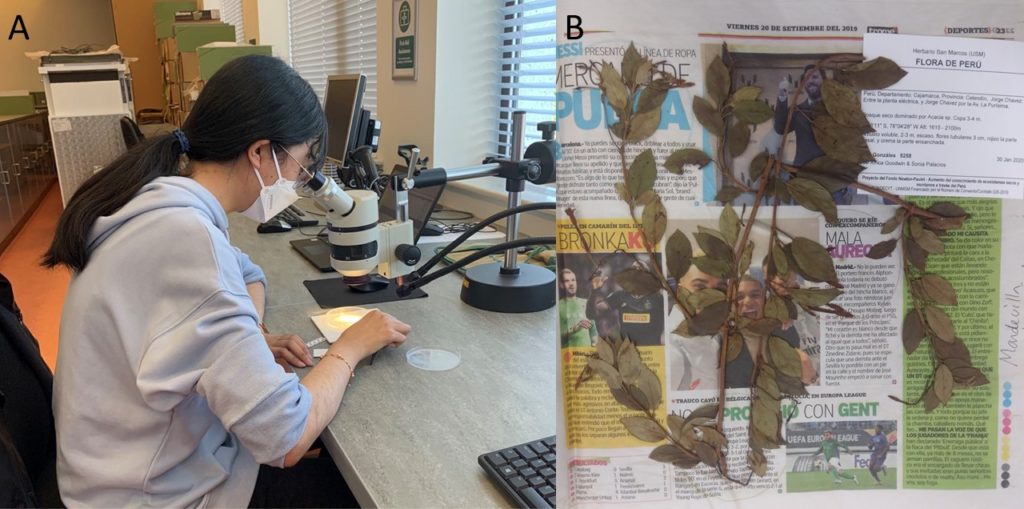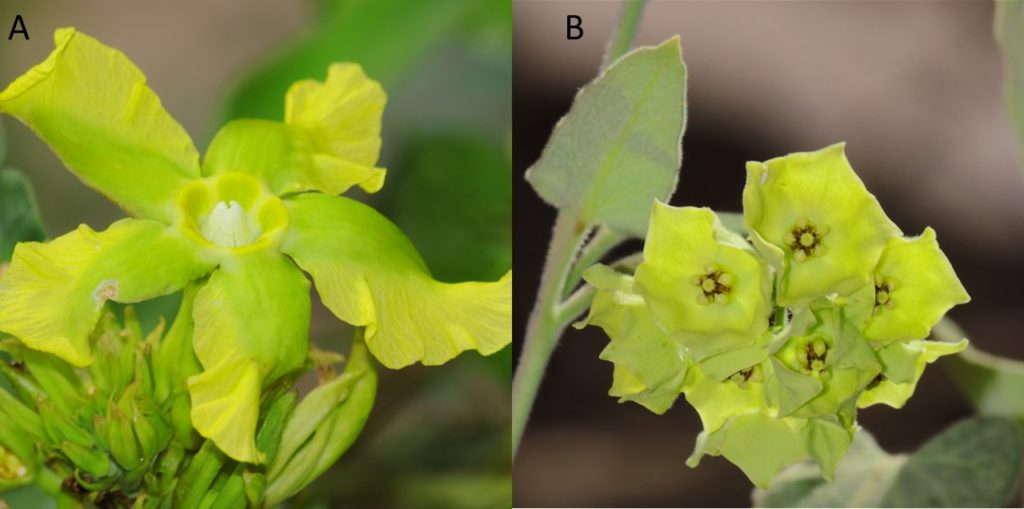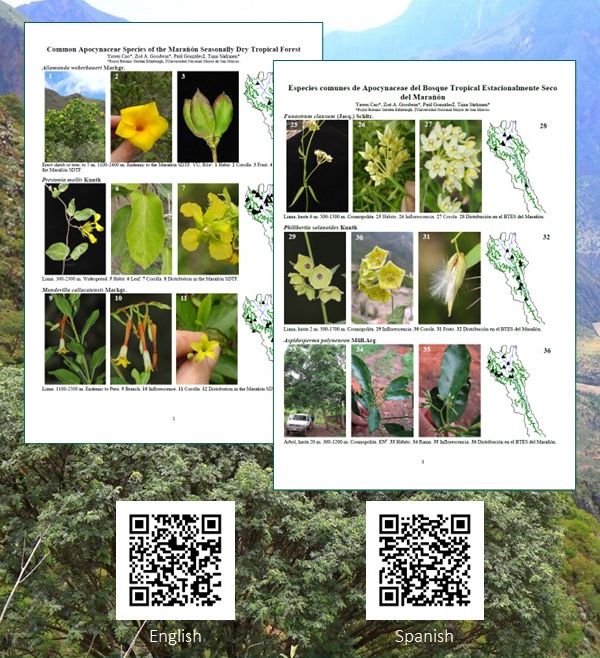In the tropics, there is an important but undervalued ecosystem – Seasonally Dry Tropical Forest (SDTF). The extremely dry climate found in the SDTF results in plants with unusual growth forms and extraordinary levels of endemism. Previous studies of plant diversity in SDTFs has been mainly plot-based & thus only focusing on woody plants. This is a good way to monitor long-term & large-scale biodiversity patterns of woody plants, but ignores herbs, epiphytes & climbing plants. SDTF is threatened and decreasing because of human activities, such as agriculture, livestock and the construction of hydroelectric dams.

For my Msc thesis, I focused on the Marañón SDTF, found in a remote inter-Andean valley in northwest Peru (Fig. 1). The Marañón SDTF is rich in woody species, with an astonishing 33% endemism recorded for woody plants. In previous studies, only five Apocynaceae species have been recorded in the Marañón SDTF and these are are all trees. So, how to increase our knowledge of Apocynaceae species in the Marañón SDTF?

In this study, I used online specimens, literature and herbarium specimens at RBGE including many recent collections from 2020 collected by Paúl Gonzáles and colleagues as part of the project ‘Increasing knowledge of dry and montane ecosystems across Peru’. I measured, identified and recorded each specimen carefully (Fig. 2), comparing them with online specimens and literature including the type specimen and protologue description.
The result was encouraging, I identified 33 different species and morphospecies of Apocynaceae present in the Marañón SDTF, including the five previously known species. Of the 28 newly registered species, ten species are uncertain in genus or species identity and require further study.
Finding the true name of the species is important when we identify the species. Some species have a large number of different names, so deciding which names should be accepted and which names are synonyms (duplicate names) is important. High numbers of synonyms are confusing and can cause inaccurate estimates of plant diversity. For example, one species recorded in the Marañón SDTF, the widespread climber Funastrum clausum, has 79 different synonyms! This shows the importance of checking the right name and summarizing synonyms to reduce misunderstanding and help future researchers.
Once we have a name and reliably determined specimens, we can have a good understanding of the species! Then suddenly we can use this information to map the species distribution, which is a powerful tool to increase our knowledge of the Apocynaceae. This can tell us which species are commonly and widely distributed? Which species are endemic to the Marañón SDTF? Which area has high plant diversity? Which altitude and environment do each species prefer?

Through species distribution maps, I found that seven species of Apocynaceae recorded in the Marañón SDTF are endemic to Peru, and two species are endemic to the Marañón SDTF. The northern section of the Marañón SDTF contained the most species and the highest density of specimens, notably the two widespread climbing species Prestonia mollis and Philibertia solanoides (Fig. 3). Whereas some endemic species were densely distributed in the southern areas. The maps significantly increase our knowledge of species distribution and indicate the more potential place of new species.
Using this information, I created an annotated checklist. It is convenient for people to search for and identify species. The annotated checklist increases our knowledge of existing Apocynaceae species in the Marañón SDTF and presents a great increase in our understanding of the diversity in this area.
This annotated checklist is a good start to understand the Apocynaceae in the Marañón SDTF but there are many more species to discover and describe. Future plant collecting should include other life forms, such as climbers and lianas. But it is clear that there are many new and exciting Apocynaceae to be described from the Marañón SDTF.
Yawei Cao, MSc in Biodiversity & Taxonomy of Plants student (2020-21).
Related links:
Y. Cao (2021) An Annotated Checklist of Apocynaceae in the Marañón Seasonally Dry Tropical Forest (Peru). MSc in Biodiversity & Taxonomy of Plants thesis.
As an output from her thesis, Yawei produced a photographic guide to the most common Apocynaceae species of the Marañón SDTF, available in English and Español.

